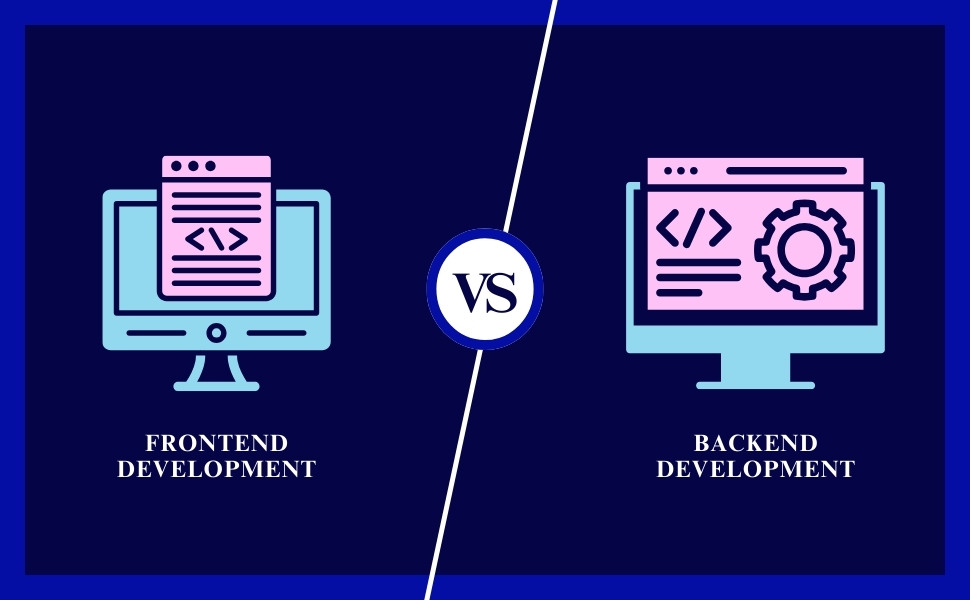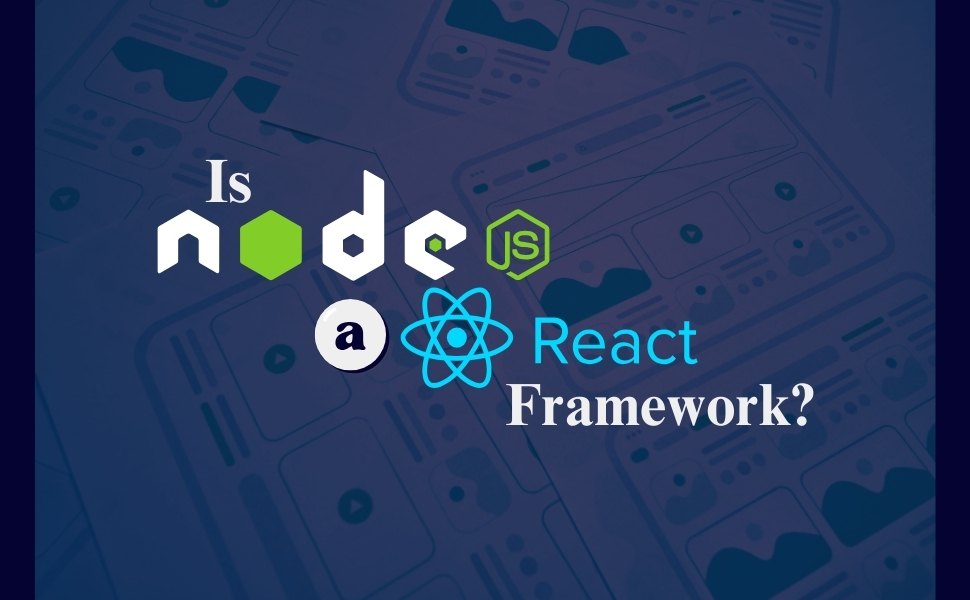Web development is how websites and apps are created. It has two main parts: frontend vs backend development. Frontend development focuses on what users see, like layouts, buttons, and images. Backend development works behind the scenes, handling data, servers, and making sure everything functions properly.
If you’ve ever wondered how websites are built, or if you’re thinking about becoming a developer, understanding the roles of frontend and backend is a great place to start. This guide will break it all down for you—what they are, the tools and skills needed, and even how to choose the right path for your career.
Let’s explore the world of frontend vs backend web development and see what makes each one unique!
Definition of Frontend vs Backend Development
It’s important to know the definition of frontend vs backend development for anyone exploring web development. It provides the basic idea of the distinct roles and responsibilities of frontend and backend development.
What is Frontend Development?
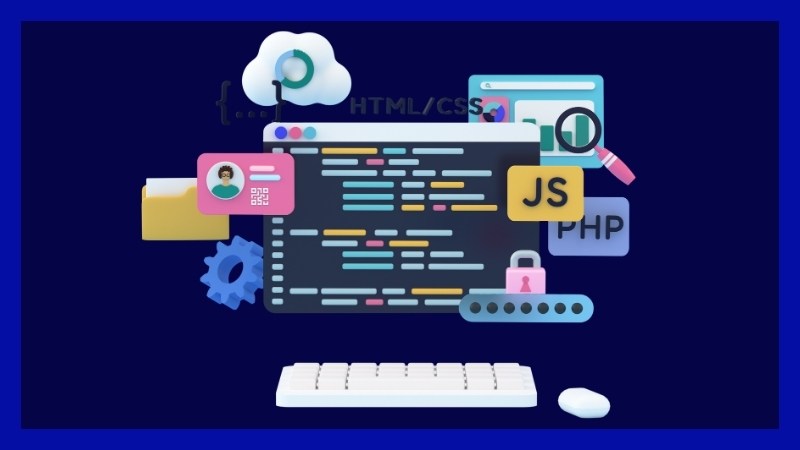
Frontend development is the process of creating the parts of a website or application that users see and interact with. It focuses on designing the look, feel, and overall experience of a site. Think of it as the “face” of a website—the buttons you click, the menus you open, and the animations you enjoy.
Frontend development ensures a website is visually appealing, easy to use, and responsive across different devices. It bridges the gap between a designer’s ideas and a functional, user-friendly website.
If you want inspiration on creative web design ideas, you can explore Creative Web Design Content Ideas.
What is Backend Development?

Backend development is the process of creating the parts of a website or application that users don’t see but rely on. It focuses on how a site works behind the scenes, including the server, database, and application logic. Think of it as the “brain” of a website—it processes requests, stores data, and ensures everything runs smoothly.
Backend development powers the functionality of a site. It handles things like user logins, form submissions, and retrieving data from a database. While the frontend development creates the user experience, the backend makes sure it all works seamlessly. Together, they are the backbone of frontend vs backend development, making websites both interactive and functional.
Key Responsibilities of Frontend vs Backend Developers
The key responsibilities of frontend vs backend developers help clarify how each contributes to creating seamless, efficient, and engaging web experiences.
Key Responsibilities of a Frontend Developer
Frontend developers are responsible for bringing a website’s design to life. They turn visual concepts into a functional, interactive website that users can see and interact with. Their main focus is to ensure the site looks good, works smoothly, and provides a great user experience.
Here are the key responsibilities of a frontend developer—
- Building User Interfaces: Create layouts and designs using frontend languages like HTML, CSS, and JavaScript.
- Ensuring Responsiveness: Make sure the site works on all devices and screen sizes.
- Improving User Experience (UX): Ensure the site is easy to use and navigate.
- Collaborating with Teams: Work with designers and backend developers to bring the site to life.
- Optimizing Performance: Speed up the site by optimizing images and code.
- Testing and Debugging: Fix errors and ensure the site works on all browsers and devices. Use frontend testing frameworks to simplify and improve testing processes.
Key Responsibilities of a Backend Developer
Backend developers focus on the “behind-the-scenes” parts of a website or application. They make sure everything works smoothly on the server side, handling data, logic, and communication with the frontend.
Here are the key responsibilities of a backend developer—
- Building and Maintaining Servers: Set up and manage servers to keep websites running smoothly.
- Managing Databases: Store, organize, and secure data for easy access.
- Developing APIs: Create connections between the frontend and backend for seamless data sharing.
- Ensuring Security: Protect websites from threats with encryption and authentication.
- Optimizing Performance: Focus on backend optimization to streamline processes, reduce load times, and ensure reliable functionality, even under heavy traffic.
- Debugging Issues: Find and fix errors to keep the system running without problems.
- Collaborating with Frontend Developers: Work with frontend teams to align design and functionality in frontend vs backend web development.
Essential Frontend vs Backend Programming Languages

Frontend and backend programming languages are the foundation of web development. They enable developers to create user-friendly interfaces and powerful backend systems.
Essential Frontend Languages
Frontend development relies on three core languages: HTML, CSS, and JavaScript. These are the building blocks of every website you see and interact with and are critical to mastering frontend vs backend web development.
- HTML (HyperText Markup Language)
HTML is the foundation of any website. It creates the structure and layout by organizing content into elements like headings, paragraphs, images, and links. Think of HTML as the framework that holds everything together.
- CSS (Cascading Style Sheets)
CSS makes the website look good. It adds colors, fonts, spacing, and layouts to the HTML structure. Without CSS, websites would look plain and unstyled. It’s what makes a website visually appealing and consistent.
- JavaScript
JavaScript brings websites to life. It adds interactivity, animations, and dynamic features. For example, when you see a dropdown menu, a photo carousel, or a button that responds when you click it, that’s JavaScript at work.
These three languages work together seamlessly:
- HTML builds the structure.
- CSS styles it.
- JavaScript makes it interactive.
Together, they form the foundation of frontend development, enabling developers to create websites that are both functional and visually engaging.
For more insights on programming languages, check out —
C Language For Web Development
7 Web App Development Languages
Essential Backend Languages
Backend development relies on various programming languages to manage data, servers, and logic. These languages form the foundation of server-side development, enabling frontend and backend frameworks to work together seamlessly.
Here are some of the most popular backend languages—
- Python
Python is a versatile and beginner-friendly language. It’s widely used for backend development, data processing, and artificial intelligence. Frameworks like Django and Flask make Python a powerful tool for building secure and scalable websites.
- JavaScript (Node.js)
While JavaScript is popular for frontend, it’s also a popular backend language used with Node.js. It allows developers to use JavaScript for server-side tasks, making it great for real-time applications like chat apps or online games.
- Java
Java is known for its reliability and scalability. It’s often used to build large, enterprise-level applications, like banking systems or e-commerce platforms. Frameworks like Spring simplify backend development in Java.
- PHP
PHP is a language specifically designed for web development. It’s commonly used for creating dynamic websites and works well with content management systems like WordPress.
- Ruby
Ruby is known for being simple and developer-friendly. The Ruby on Rails framework makes it easy to build web application development quickly and efficiently. It’s often used by startups and smaller projects.
- C#
C# is a language developed by Microsoft and is popular for building applications within the .NET framework. It’s commonly used for enterprise solutions and web services.
- Go (Golang)
Go is a fast and modern language developed by Google. It’s great for building lightweight, high-performance applications like APIs and cloud-based services.
These backend languages are essential for building robust systems that power websites and applications. The choice of language depends on the project’s scale and goals, showcasing the balance in frontend vs backend development.
Popular Frontend vs Backend Frameworks and Libraries
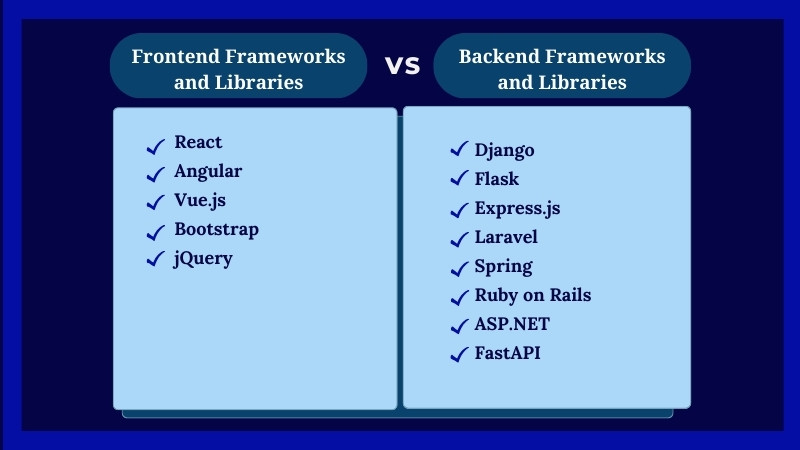
Frontend vs backend frameworks and libraries simplify web development by providing pre-written code and tools. Right tools will help to speed up development and enhance functionality.
Popular Frontend Frameworks and Libraries
Frontend frameworks and libraries are essential tools for frontend development. They make coding faster, easier, and more efficient by providing pre-written code and reusable components. These tools are invaluable for building dynamic websites and applications efficiently. Here are some of the most popular frontend frameworks and libraries—
- React
React is a JavaScript library developed by Facebook. It’s ideal for building user interfaces, especially single-page applications. React simplifies frontend development by breaking the UI into reusable components.
- Angular
Angular is a framework developed by Google. It’s powerful for building complex web applications. Angular features include two-way data binding, which ensures that the data on the website update in real-time.
- Vue.js
Vue.js is a lightweight and flexible JavaScript framework. It’s known for being beginner-friendly while still powerful enough for advanced projects. Developers love Vue for its simplicity and speed, making it a top choice for frontend development.
- Bootstrap
Bootstrap is a CSS framework that makes designing websites faster. It provides ready-made templates, grids, and components like buttons and forms, ensuring websites look great on all devices.
- jQuery
jQuery is a library that simplifies JavaScript tasks. It makes things like animations, event handling, and AJAX requests easier. Though it’s less commonly used today, it remains a part of frontend vs backend development discussions.
These frameworks and libraries save time and effort, helping developers focus on creating beautiful, interactive, and responsive websites. They’re essential tools in modern frontend development.
Popular Backend Frameworks
Backend frameworks make server-side development faster, easier, and more efficient. They provide pre-written code, tools, and features that help developers build websites and applications. These frameworks are vital for balancing frontend vs backend web development.
Here are some of the most popular backend frameworks—
- Django
Django is a powerful and secure Python framework. It’s known for its simplicity and ability to handle large-scale applications. With built-in tools for database management, authentication, and security, Django is a favorite for backend development projects.
- Flask
Flask is another Python framework but is more lightweight and flexible. It’s great for smaller projects or when developers want more control over the design and features.
- Express.js
Express.js is a minimalist framework for Node.js. It’s widely used for building APIs and web applications quickly. Its simplicity and speed make it a favorite for real-time apps like chat systems.
- Laravel
Laravel is a PHP framework that makes backend development enjoyable and efficient. It includes tools for routing, authentication, and database migrations, making it ideal for building modern, dynamic websites.
- Spring
Spring is a robust framework for Java, often used to create enterprise-level applications like e-commerce platforms and financial systems. Known for its flexibility and scalability, it’s a go-to choice in large-scale backend development.
- Ruby on Rails
Ruby on Rails is a developer-friendly framework known for its speed and simplicity. It’s great for startups and small businesses because it helps build web apps quickly without compromising quality.
- ASP.NET
ASP.NET is a framework by Microsoft for building web applications with C#. It’s widely used in enterprise environments and is great for creating secure and scalable systems.
- FastAPI
FastAPI is a modern Python framework focused on building fast and high-performance APIs. It’s known for its simplicity and is ideal for projects that require speed and reliability.
These frameworks help developers save time and focus on solving problems rather than writing repetitive code. Each framework is suited to specific needs, making them essential tools for building the backend of any web application.
Essential Tools and Processes in Frontend and Backend Development

Web development relies on a combination of tools and processes to build efficient and functional websites. While frontend development focuses on tools for creating user interfaces, backend development uses tools and systems for managing server-side functionality.
Common Frontend Tools
Frontend developers use various tools to make their work faster, easier, and more efficient. These tools help with coding, debugging, and optimizing websites for a smooth user experience. Mastering these tools is an essential part of excelling in frontend development and understanding its role in frontend vs backend web development.
Here are some of the most common frontend tools—
- VS Code (Visual Studio Code)
VS Code is a popular code editor among developers. It’s lightweight, customizable, and packed with features like syntax highlighting and extensions, making frontend development simpler and more organized.
- Git and GitHub
Git is a version control system that tracks changes to code. GitHub is an online platform where developers can store and collaborate on projects. Together, they are crucial for frontend developers working in teams or on shared codebases.
- npm (Node Package Manager)
npm manages JavaScript libraries and frameworks, helping developers install and use pre-built packages. It saves time by reducing repetitive coding tasks, making it invaluable in modern frontend development.
- Webpack
Webpack bundles code, styles, and assets into a single optimized file. This tool improves website performance and ensures smooth integration between various parts of a project, a key aspect of both frontend and backend development.
- Browser Developer Tools
Most browsers, like Chrome and Firefox, come with built-in developer tools. These tools allow frontend developers to inspect code, debug issues, and test websites directly in the browser, making optimization easier.
- Prettier and ESLint
Prettier formats code to make it clean and consistent. ESLint checks for errors in JavaScript and helps maintain coding standards. These tools ensure high-quality results in frontend development.
- Figma
Figma, primarily a design tool, is used by developers to view and implement designs. It bridges the gap between designers and developers, improving collaboration in frontend vs backend development workflows.
These tools are essential for creating fast, responsive, and polished websites. They enhance the productivity of frontend developers, helping them deliver high-quality results in the competitive world of frontend vs backend web development.
Related Article:
What’s Your Favorite Replacement for jQuery?
jQuery vs React: What You Need to Know Before You Start
Common Backend Tools
Backend tools help developers build, test, and manage the server-side systems that power websites and applications. These tools are designed to simplify complex tasks, improve efficiency, and ensure the backend runs smoothly. Here are some of the most commonly used backend tools:
1. Postman
Postman is an API testing tool used to design, test, and debug APIs. It allows developers to check if their APIs are working as expected by sending requests and analyzing responses. Postman is user-friendly and essential for managing backend services.
2. MySQL Workbench
MySQL Workbench is a visual tool for designing and managing MySQL databases. It helps developers create, optimize, and troubleshoot databases. With its intuitive interface, backend developers can ensure data is stored and retrieved efficiently.
3. Docker
Docker is a containerization tool that creates isolated environments for applications. It helps developers test and deploy backend systems without worrying about compatibility issues. Docker ensures consistency across development, testing, and production.
4. Redis
Redis is a high-performance caching tool that stores temporary data for quick access. It improves the speed of backend systems by reducing the time needed to fetch data from databases repeatedly. Redis is widely used for tasks like session management and real-time analytics.
5. Jenkins
Jenkins is a continuous integration and continuous delivery (CI/CD) tool that automates testing and deployment. It helps backend developers streamline workflows, saving time and reducing errors during updates and deployments.
6. pgAdmin
pgAdmin is a popular tool for managing PostgreSQL databases. It provides a user-friendly interface for organizing data, running queries, and analyzing performance. It’s ideal for developers working with complex datasets.
7. Visual Studio Code (VS Code)
VS Code isn’t just for frontend developers—it’s also widely used for backend development. Its extensions and features, like debugging tools and integrated terminal, make coding faster and more efficient.
These tools simplify backend processes, making tasks like managing databases, testing APIs, and deploying applications easier. They ensure the backend is optimized, secure, and reliable—critical for smooth frontend vs backend development collaboration.
Related Article:
jQuery vs JavaScript: How Are They Different?
Frontend vs Backend: Key Differences
Frontend vs backend development are two sides of the same coin. They work together to create functional and engaging websites or applications, but they have distinct roles and responsibilities.
Here’s a clear comparison of frontend vs backend—
| Aspect | Frontend Development | Backend Development |
|---|---|---|
| Definition | Focuses on the parts of a website users see and interact with. | Focuses on the server, databases, and application logic behind the scenes. |
| Purpose | To create a visually appealing and user-friendly experience. | To ensure the website or app functions correctly and efficiently. |
| Core Technologies | HTML, CSS, JavaScript. | Python, Java, PHP, Node.js, Ruby, C#. |
| Frameworks | React, Angular, Vue.js, Bootstrap. | Django, Flask, Express.js, Laravel, Spring. |
| Responsibilities | Building layouts, styling pages, and adding interactivity. | Managing servers, databases, APIs, and security. |
| User Interaction | Directly interacts with users through browsers. | Handles requests and sends responses to the frontend. |
| Tools Used | Code editors, browser developer tools, npm, Webpack. | Servers, databases, version control tools, and APIs. |
| Main Goal | To ensure the site is attractive, responsive, and easy to use. | To handle data, run processes, and support frontend functionality. |
| Collaboration | Works with backend developers to fetch and display data. | Works with frontend developers to provide data and logic. |
Frontend development focuses on creating what users see, while backend development powers what they don’t see. Together, they ensure websites are functional, fast, and enjoyable to use, making them integral to frontend vs backend web development.
Read More: React vs Angular: Choosing The Right Framework for Your Project.
Essential Skills for Frontend vs Backend Developers
Frontend and backend developers need specific skills to excel in their roles. While frontend development focuses on user-facing elements, backend development handles behind-the-scenes functionality.
Essential Skills for Frontend Developers
- Proficiency in frontend languages.
- Understanding of frontend frameworks and libraries.
- Ability to create responsive designs.
- Strong debugging and testing skills.
- Attention to detail and creativity.
Essential Skills for Backend Developers
- Proficiency in backend languages.
- Knowledge of backend frameworks and databases.
- Skills in API development and integration.
- Focus on server management and security.
- Strong problem-solving abilities.
Shared Skills
- Teamwork and collaboration especially during frontend vs backend development integration.
- Version control expertise.
- Adaptability to new tools and trends.
Both roles require technical knowledge, creativity, and collaboration to create seamless and functional websites, making them indispensable in frontend vs backend web development.
Frontend vs Backend Developer Salaries
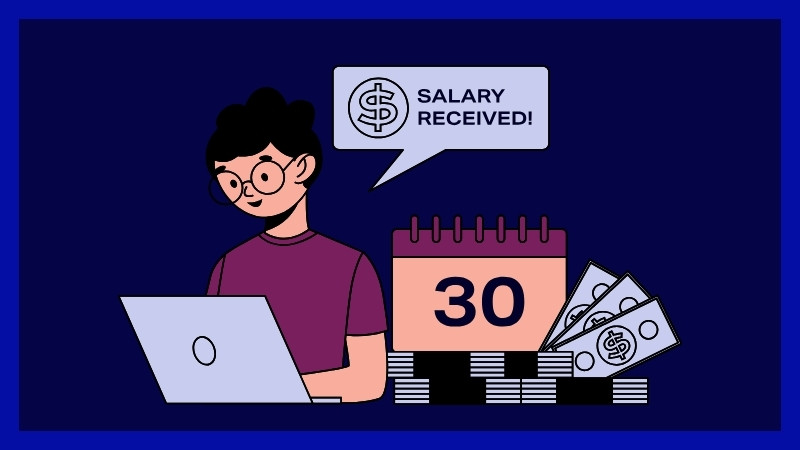
Understanding frontend vs backend developer salaries is key for those exploring a career in frontend vs backend web development.
Below is a comparison of frontend and backend developer salaries, along with factors that influence their variations—
| Aspect | Frontend Developers | Backend Developers |
|---|---|---|
| Average Salary (U.S.) | $70,000 – $110,000 per year | $80,000 – $120,000 per year |
| Entry-Level Salary | $50,000 – $70,000 | $55,000 – $75,000 |
| Mid-Level Salary | $80,000 – $100,000 | $90,000 – $110,000 |
| Senior-Level Salary | $110,000+ | $120,000 – $150,000+ |
Factors Influencing Salary Variations
Several factors affect the earning potential of frontend and backend developers—
- Location: Higher salaries in tech hubs (e.g., San Francisco, London) due to demand and cost of living.
- Experience: Entry-level developers earn less, while senior developers with expertise earn significantly more.
- Skills and Expertise: Specialized knowledge (e.g., backend APIs, cloud computing) can lead to higher salaries.
- Industry: Roles in tech, finance, or healthcare often come with better pay and benefits.
The demand for skilled professionals ensures competitive pay in both frontend development and backend development roles.
Read More: Top 10 Mobile App Development Frameworks
Pros and Cons of Frontend vs Backend Web Development
Frontend and backend development are like two sides of a coin—both are essential for creating functional and appealing websites or applications. Here’s a closer look at what makes each exciting and challenging. Here’s a comparison—
Pros and Cons of Frontend Development
Frontend development focuses on building the visual interface users interact with. It’s where creativity meets technology, but it comes with some unique challenges.
| Pros | Cons |
|---|---|
| Creativity and design-focused. | Requires constant updates. |
| Instant visual feedback. | Challenges with browser compatibility. |
| High demand in the job market. | Pressure for pixel-perfect designs. |
| Directly impacts user experience. | |
| Collaboration with designers. |
Pros and Cons of Backend Development
Backend development focuses on the “behind-the-scenes” systems that power a website or app. It’s all about ensuring functionality and reliability, but the complexity can be a hurdle.
| Pros | Cons |
|---|---|
| Logical and problem-solving focused. | Less visual and creative. |
| High earning potential. | Steeper learning curve. |
| Diverse tasks with databases and servers. | Debugging backend issues can be complex. |
| Growing demand and career stability. | |
| Ensures data security and scalability. |
Read More: Best Web Development Languages
How to Choose Between Frontend vs Backend Development?
Choosing between frontend and backend development can be tricky, especially if you’re new to web development. Each offers unique benefits, challenges, and career opportunities. The right choice depends on your interests, career goals, and what excites you the most.
- If you love creativity and working closely with designers, go for frontend development.
- If you enjoy solving logical problems and working with systems and data, choose backend development.
- If you want to handle both and enjoy versatility, aim for full-stack development.
Start with small projects that explore both frontend and backend to discover what excites you most. Think about your long-term career goals and consider market demand before making your decision. No matter what path you choose, there are excellent opportunities in frontend vs backend web development.
Why Choose Boomdevs for Your Web Development Needs?
At Boomdevs, we specialize in delivering top-notch web development solutions tailored to your unique needs. Whether you’re looking to create a stunning frontend, a robust backend, or a seamless full-stack solution, our experienced team is here to help.
Why Partner with Boomdevs?
- Expertise Across Frontend and Backend Development: Our skilled developers excel in the latest tools, languages, and frameworks to create exceptional websites and applications.
- Customized Solutions: We focus on understanding your business goals to deliver personalized and effective results.
- Reliable Support and Consultation: Whether you need guidance on starting a project or improving an existing one, we’re just a call or click away.
- Proven Track Record: Our portfolio speaks for itself. From startups to established businesses, we’ve helped clients succeed with innovative web solutions.
Whether you’re still deciding between frontend and backend development or ready to launch your project, Boomdevs is here to guide you every step of the way.
Contact us for expert service and free consultation!
Together, we can turn your vision into reality.
Final Thought
Frontend vs backend web development showcases two essential sides of creating websites and applications. Frontend development focuses on the visual experience and user interaction, while backend development powers the functionality behind the scenes. Together, they make websites functional, seamless, and enjoyable to use.
Whether you’re drawn to the creativity of frontend development, the logic of backend development, or the flexibility of full-stack development, the right path depends on your interests and goals. By learning the skills, tools, and frontend and backend frameworks for your chosen path, you can build a rewarding career in the dynamic world of web development.



